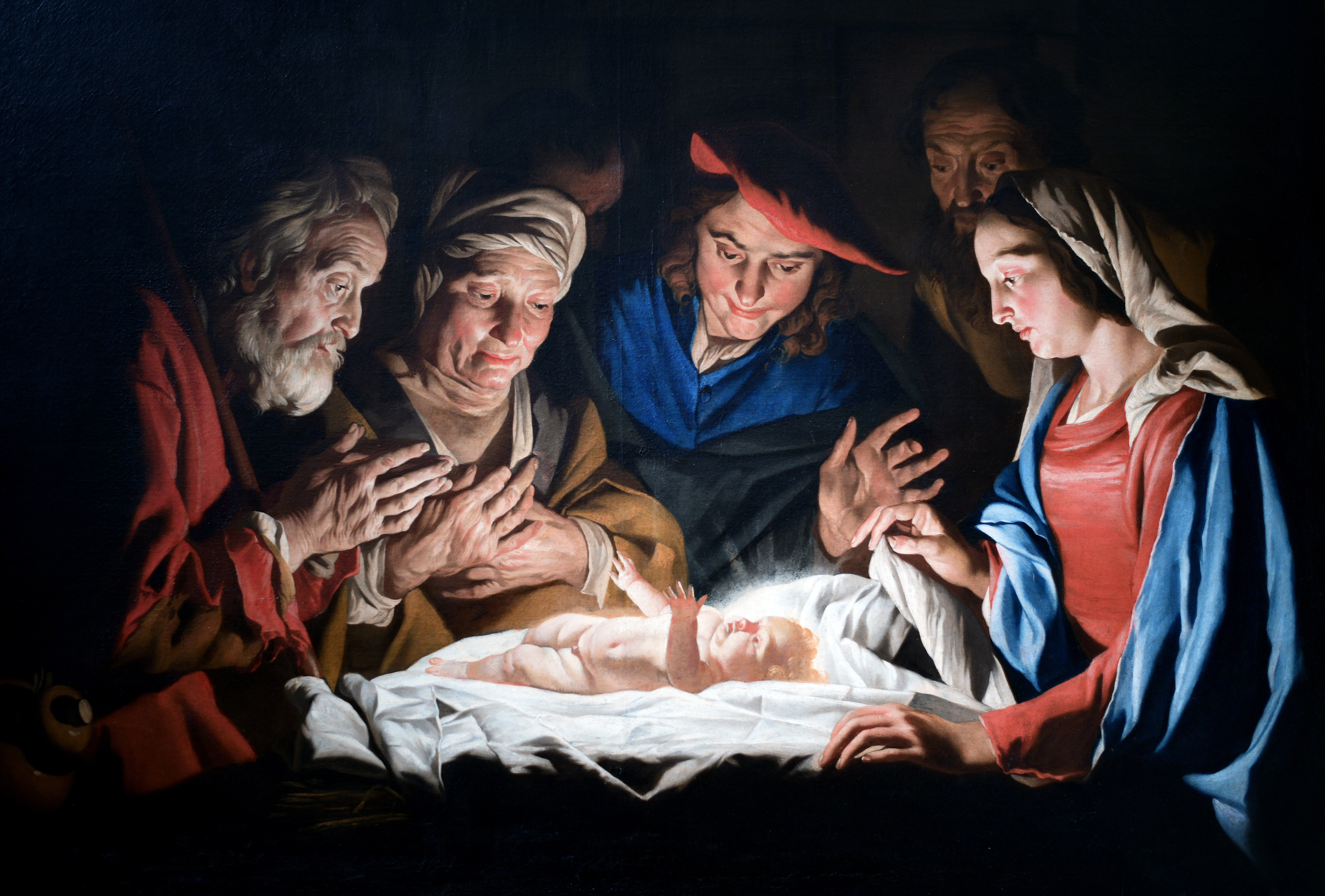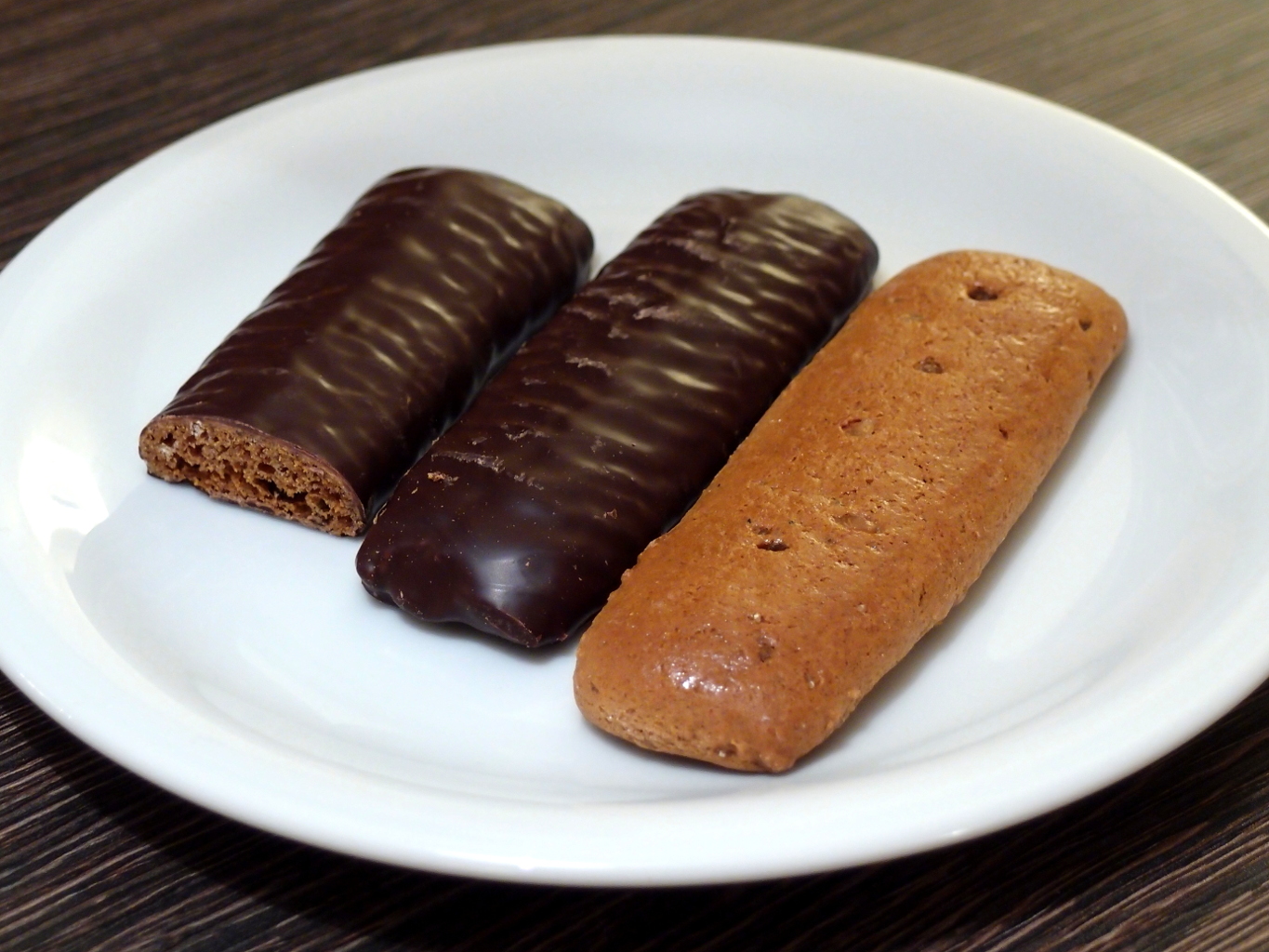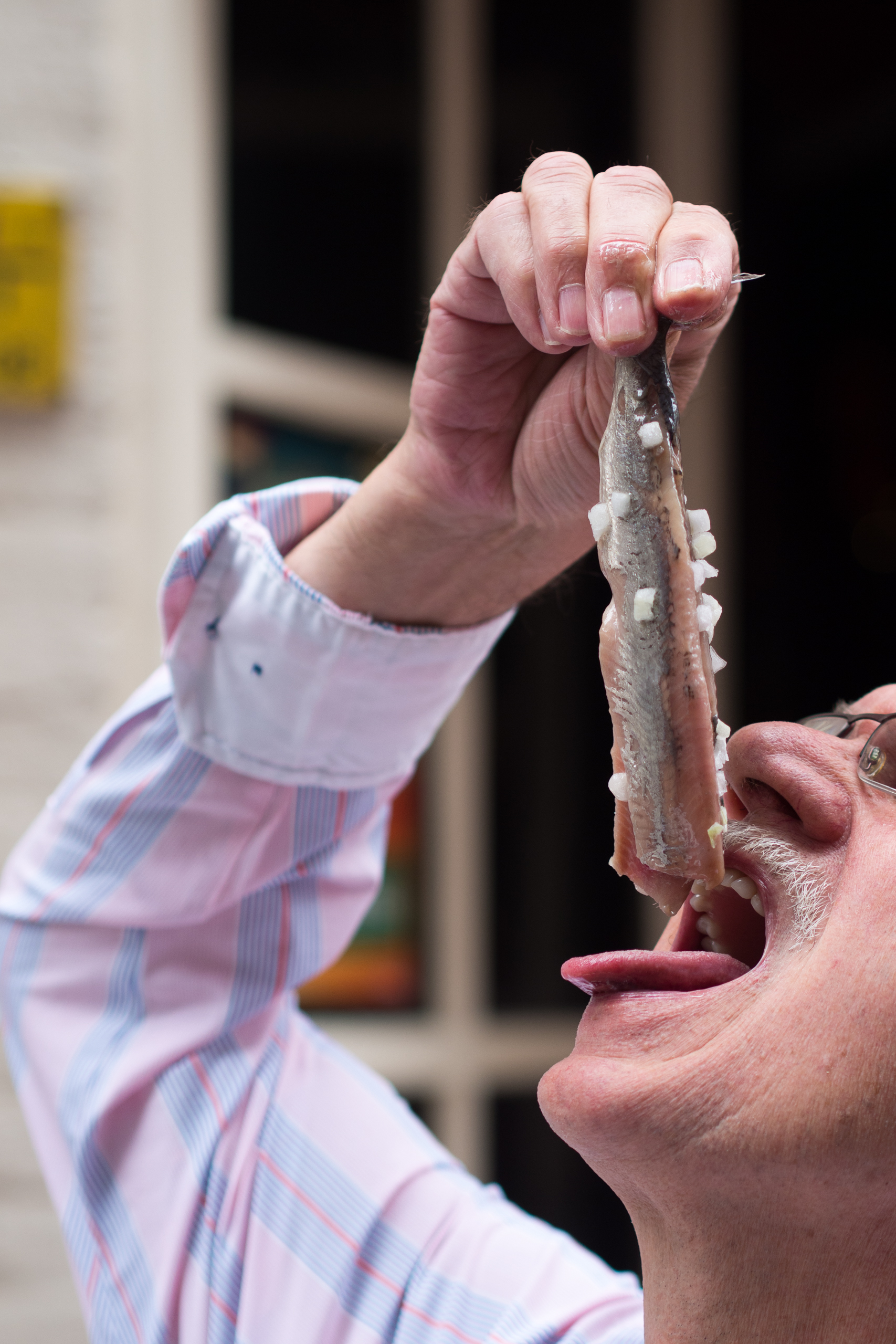|
Banket (pastry)
Banket (bahn-KET) is a type of sweet pastry filled with almond Paste (food), paste, which originated in the Netherlands. It is made in several forms, each of which goes by various names. One variety consists of long bars or loaves which are sliced into individual servings – also referred to in English as almond rolls or almond patties, and in Dutch as '. Another variety are rolled logs shaped into letters – also referred to in English as Dutch letters, banket letters, almond letters, or butter letters; and in Dutch language, Dutch as ' or '. It is sometimes made as individual banket or almond patties. Banket is made by rolling pastry dough around an almond paste filling, then baking it. The pastry has a porous, airy, and flaky texture, with a dense granular filling. In the Netherlands and in Dutch people, ethnic Dutch communities in the Midwestern United States, it is most popular during Christmas season. It is also popular during Dutch festivals in the United States. Ingre ... [...More Info...] [...Related Items...] OR: [Wikipedia] [Google] [Baidu] |
Netherlands
, Terminology of the Low Countries, informally Holland, is a country in Northwestern Europe, with Caribbean Netherlands, overseas territories in the Caribbean. It is the largest of the four constituent countries of the Kingdom of the Netherlands. The Netherlands consists of Provinces of the Netherlands, twelve provinces; it borders Germany to the east and Belgium to the south, with a North Sea coastline to the north and west. It shares Maritime boundary, maritime borders with the United Kingdom, Germany, and Belgium. The official language is Dutch language, Dutch, with West Frisian language, West Frisian as a secondary official language in the province of Friesland. Dutch, English_language, English, and Papiamento are official in the Caribbean Netherlands, Caribbean territories. The people who are from the Netherlands is often referred to as Dutch people, Dutch Ethnicity, Ethnicity group, not to be confused by the language. ''Netherlands'' literally means "lower countries" i ... [...More Info...] [...Related Items...] OR: [Wikipedia] [Google] [Baidu] |
Sinterklaas Food
Sinterklaas () or Sint-Nicolaas () is a legendary figure based on Saint Nicholas, patron saint of children. Other Dutch names for the figure include ''De Sint'' ("The Saint"), ''De Goede Sint'' ("The Good Saint") and ''De Goedheiligman'' (derived from ''goed hylickman'' meaning "good marriage man", alluding to his historical reputation as a Saint who can help you find a good life partner). Many descendants and cognates of "Sinterklaas" or "Saint Nicholas" in other languages are also used in the Low Countries, nearby regions, and former Dutch colonies. The feast of Sinterklaas celebrates the name day of Saint Nicholas on 6 December. The Sinterklaas feast is celebrated annually with the giving of gifts on St. Nicholas' Eve (5 December) in the Netherlands and on the morning of Saint Nicholas Day (6 December) in Belgium, Luxembourg, western Germany, and northern France (French Flanders, Lorraine, Alsace and Artois). The tradition is also celebrated in some territories of the former ... [...More Info...] [...Related Items...] OR: [Wikipedia] [Google] [Baidu] |
Cuisine Of The Midwestern United States
The cuisine of the American Midwest draws its culinary roots most significantly from the cuisines of Central, Northern and Eastern Europe, and Indigenous cuisine of the Americas, and is influenced by regionally and locally grown foodstuffs and cultural diversity. Everyday Midwestern home cooking generally showcases simple and hearty dishes that make use of the abundance of locally grown foods. It has been described as "no-frills homestead and farm food, exemplifying what is called typical American cuisine". Some Midwesterners bake their own bread and pies and preserve food by canning and freezing it. Background Sometimes called "the breadbasket of America", the Midwest serves as a center for grain production, particularly wheat, corn, and soybeans. Beef and pork processing have long been important Midwestern industries. Chicago and Kansas City served as stockyards and processing centers of the beef trade and Cincinnati, nicknamed "Porkopolis", was once the largest pork- ... [...More Info...] [...Related Items...] OR: [Wikipedia] [Google] [Baidu] |
Christmas Food
Christmas is an annual festival commemorating the birth of Jesus Christ, observed primarily on December 25 as a religious and cultural celebration among billions of people around the world. A liturgical feast central to Christianity, Christmas preparation begins on the First Sunday of Advent and it is followed by Christmastide, which historically in the West lasts twelve days and culminates on Twelfth Night. Christmas Day is a public holiday in many countries, is observed religiously by a majority of Christians, as well as celebrated culturally by many non-Christians, and forms an integral part of the annual holiday season. The traditional Christmas narrative recounted in the New Testament, known as the Nativity of Jesus, says that Jesus was born in Bethlehem, in accordance with messianic prophecies. When Joseph and Mary arrived in the city, the inn had no room, and so they were offered a stable where the Christ Child was soon born, with angels proclaiming this ne ... [...More Info...] [...Related Items...] OR: [Wikipedia] [Google] [Baidu] |
List Of Pastries
pastry, Pastries are small buns made using a stiff dough enriched with fat. Some dishes, such as pies, are made of a pastry casing that covers or completely contains a filling of various sweetness, sweet or Umami, savory ingredients. The six basic types of pastry dough (a food that combines flour and fat) are shortcrust pastry, filo pastry, choux pastry, flaky pastry, puff pastry and suet pastry. Doughs are either nonlaminated, when fat is cut or rubbed into the flour, or else laminated dough, laminated, when fat is repeatedly folded into the dough using a technique called lamination. An example of a nonlaminated pastry would be a pie or tart crust, and brioche. An example of a laminated pastry would be a croissant, danish pastry, danish, or puff pastry. Many pastries are prepared using shortening, a fat food product that is solid at room temperature, the composition of which lends to creating crumbly, shortcrust-style pastries and pastry crusts. Pastries were first created by the ... [...More Info...] [...Related Items...] OR: [Wikipedia] [Google] [Baidu] |
List Of Cookies
This is a list of notable cookies (American English), also called biscuits (British English). Cookies are typically made with flour, egg, sugar, and some type of shortening such as butter or cooking oil, and baked into a small, flat shape. Cookies Unsorted * Almond biscuit * Cookie sandwich * Hadji bada * Stuffed cookie See also * List of baked goods * List of candies * List of crackers * List of desserts A dessert is typically the sweet Course (food), course that, after the entrée and main course, concludes a meal in the culture of many countries, particularly western world, Western culture. The course usually consists of sweet foods, but may ... * List of pastries * List of shortbread biscuits and cookies References {{DEFAULTSORT:Cookies * * Cookies Cookies ... [...More Info...] [...Related Items...] OR: [Wikipedia] [Google] [Baidu] |
Dutch Cuisine
Dutch cuisine is formed from the cooking traditions and practices of the Netherlands. The country's cuisine is shaped by its location on the fertile Rhine–Meuse–Scheldt delta at the North Sea, giving rise to fishing, farming, and overseas trade. Due to the availability of water and flat grassland, the Dutch diet contains many dairy products such as butter and List of Dutch cheeses, cheese. The court of the Burgundian Netherlands enriched the cuisine of the elite in the Low Countries in the 15th and 16th century, so did in the 17th and 18th century colonial trade, when the Dutch ruled the spice trade, played a pivotal role in the global spread of coffee, and started the modern era of chocolate, by developing the Dutch process chocolate. In the late 19th and early 20th centuries, Dutch food and food production became designed to be efficient, which was so successful that the country became the world's second-largest exporter of agricultural products by value behind the United St ... [...More Info...] [...Related Items...] OR: [Wikipedia] [Google] [Baidu] |
Chocolate Letter
Chocolate letters ( ) are a form of candy associated with the Dutch holiday of Sinterklaas (Saint Nicholas). Celebrants of the Sinterklaas celebration are traditionally given their initials made out of chocolate, either on Sinterklaas Eve, which is the fifth of December each year, or during the morning on Sinterklaas Day, which is the sixth day of December. Various sizes, types and flavours are available. In order to use the same amount of chocolate for each letter, the manufacturer varies the thickness of the letter. This way, one letter is not favoured over another, for example, with wide letters such as the W or the M getting more chocolate than narrow letters such as I or the J. Instead, the wide letters are made with a thinner layer of chocolate, and the narrow letters get a thicker layer of chocolate. An often used typeface A typeface (or font family) is a design of Letter (alphabet), letters, Numerical digit, numbers and other symbols, to be used in printing or for e ... [...More Info...] [...Related Items...] OR: [Wikipedia] [Google] [Baidu] |
Holland, Michigan
Holland is a city in Ottawa County, Michigan, Ottawa and Allegan County, Michigan, Allegan counties in the U.S. state of Michigan. Located in the West Michigan, western region of the Lower Peninsula of Michigan, Lower Peninsula, the city is situated near the eastern shore of Lake Michigan on Lake Macatawa, which is fed by the Macatawa River. As of the 2020 United States census, 2020 census, the population was 34,378, with an List of United States urban areas, urbanized area population of 107,034. Holland was founded by Dutch Americans and is in an area that has a large percentage of citizens of Dutch American heritage. It is home to Hope College and Western Theological Seminary, institutions of the Reformed Church in America. Holland's economy includes manufacturing, agriculture, tourism, and higher education. It is home to a number of prominent companies, including Herman Miller, Haworth (company), Haworth, and Adient. The city also attracts thousands of visitors each year for ... [...More Info...] [...Related Items...] OR: [Wikipedia] [Google] [Baidu] |
Orange City, Iowa
Orange City is a city in, and the county seat of, Sioux County, Iowa, United States. Its population was 6,267 in the 2020 census, an increase from 5,582 in 2000. Named after William of Orange, the community maintains its Dutch settler traditions visibly, with Dutch storefront architecture and an annual Tulip Festival. History and culture Orange City was first called Holland and was later renamed in honor of Dutch royalty, the Prince of Orange. The city was founded in 1870 by settlers from Pella, Iowa, who were looking for cheaper and better land. As the county seat of Sioux County, the city is the location of the Sioux County Courthouse, which is listed on the National Register of Historic Places. Geography According to the United States Census Bureau, the city has a total area of , all land. Demographics 2020 census As of the census of 2020, there were 6,267 people, 2,095 households, and 1,479 families residing in the city. The population density was 1,447.3 inhabitan ... [...More Info...] [...Related Items...] OR: [Wikipedia] [Google] [Baidu] |





